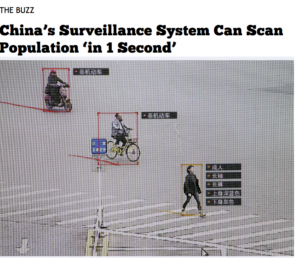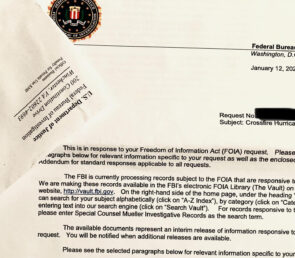
Genetic Informatics: Unveiling the Interplay of Digital Signals and Biological Blueprint
Date : February 8, 2024 By
Exploratory theoretical paper on the psychobiological effects of chronic digital stress and potential mitigation through decentralized, provenance-aware information systems.
As a visual journalist designing over a dozen US newspapers each week, I experience sustained negative affective arousal through regular exposure to tragic syndicated and local news. During my nightly wind-down, I scan a personally-collated digital codex of multimedia posts on current events referencing matching social media metadata to evaluate sociopolitical trends, identify relationships, and augment input through local environmental prompts. For example, a recently published post within this codex introduced abstract questions about the relationship between the control of information and DNA, which characterizes this analysis. Simplifying the chasmic span between subjects — exploring the impact of sensational digital information on sensation and perception reveals how algorithmic environmental simulations inflict pressure on genetic expression through the exploitation of intergenerational sensitivity to adverse environments.
Of chief concern is how amplifying artificial, fear-based news reporting and bifurcated programming across digital platforms simulates a stressful or traumatic setting for genotype-environment interactions. Sustained negative affective arousal increases the prevalence of developing disorders among some genotypes to such a degree that susceptibility to environmental adversities eclipses direct genetic causes (Tienari et al., 2004). Further, this relationship lends credence to the idea that adverse programming effects may radically increase intergenerational susceptibility to this trauma-coded genetic expression potentially “through non-genomic, possibly epigenetic mechanisms affecting DNA function or gene transcription” (Yehuda & Lehrner, 2018, p. 243). Pasquinelli (2015) describes how fixed algorithmic goals inhibit the ability of the organism to self-organize and repair, leading to pathological breakdowns. Further, “Wiener claimed that certain psychological instabilities had rather precise technical analogues” (Bates 2014, p. 33, as cited in Pasquinelli, 2015, p. 9). Pasquinelli (2015) contends that “the reason of trauma must be rediscovered as the actual inner logic of the age of intelligent machines” (p. 8).
Analyzing multimedia vulnerability in prevalent Social Networking Site (SNS) addiction, the impact of algorithmic influence extends to “structural morphology changes in the brain,” associated with an increasingly “efficient impulsive brain system” through the reduction of grey matter in the bilateral amygdala proportional to the degree of addiction (He et al. 2017, p. 1). He et al. (2017) relay prior imaging and conceptual models that characterize technology-related addictions by “an interaction of sensitized reward processing and cue-reactivity with diminished prefrontal inhibitory control” (He et al. 2017, p. 1). Further, Mureyko et al. (2018) expand on how subconscious manipulation occurs within the infosphere’s relationship to symbolism and social organization through the self-copying activity of mirror neurons, “constructing copies of the imitated reality through variational repetition in the mass media technology” (Mureyko et al., 2018, p. 3). Mureyko et al. (2018) address neurophysiological factors of social media technology through mirror neuron systems responsible for learning observed behavior, which include “the posterior inferior frontal gyrus and adjacent ventral premotor cortex, as well as the rostral inferior parietal lobule,” which may comprise a “core circuitry of imitation” along with the superior temporal sulcus (Iacoboni, 2005, p. 632), collectively involving the frontal and parietal lobes.
However, varying and preliminary research indicates that a strategic or mindful approach to digital media consumption may increase the density and plasticity of grey matter and preserve white matter connectivity. He et al. (2017) also provide for the reversibility of structural changes caused by technology addictions through mindfulness. Accordingly, the collective body of research suggests mindful assessment down-regulates primal reactions to stress and amplifies one’s ability to activate higher-order regions in the prefrontal cortex to provide a more thoughtful response (Ireland, 2014). Parallel to the analogous binding of collated digital insights to actionable local information, He et al. (2017) note that the amygdala may link “environmental cues to reward systems in the striatum” (p. 2), including the nucleus accumbens — a major dopaminergic pathway that associates motivation and action.
Neurotransmitters act as the body’s chemical postal workers. The nervous system uses these molecules to transmit messages between neurons and between neurons and muscles. Their influence on neurons is either excitatory, inhibitory, or modulatory, depending on the binding receptor. Excitatory transmitters boost the development of electrical signals or action potentials in receptive neurons, inhibitory transmitters deter this process, and modulatory transmitters can affect a mass of neurons, affecting the potency of other messengers by adjusting communication at cellular synapses. In addition, they regulate processes that control functions, including memory, learning, sleep, pleasure, pain, and mood, through specific behaviors such as arousal, appetite suppression, and enhanced cognition, among others (Spielman et al., 2020). Spielman et al. (2020) note that psychoactive drugs that correct neurotransmitter imbalances are classified as agonists and antagonists either mimicking neurotransmitters or blocking activity at their receptors, respectively (Spielman et al., 2020).
Digital content exposure affects a host of neurotransmitters, which moderate physical responses differently, depending on the exposure method. Problematic social media and Internet use alters biological functions through the disruption of neurotransmitter regulation (Cataldo et al., 2021). For example, Brown (2020) notes that rewarding environmental cues confined within digital systems are often reducible to addictive short bursts of dopamine through manipulated notifications and interactions on social media.
However, the strategic application of digital content to elicit more meaningful environmental exchanges may align these chemical messengers more uniformly with actual events in a person’s experience outside the simulacra. Moreover, mindful interaction with self-collated digital streams and accessibility to raw, unmanipulated sensory data may also mimic the periodic detachment prescribed by Brown (2020) from the issue of algorithmic influence, which is characteristic of widely studied problematic Internet use (PUI) abnormalities. Implementing unmanipulated data streams for selective use with real-world environmental engagement may curb the increasing need for pharmacological interventions and requires further research.
Of the seven primary neurotransmitters, dopamine is a critical factor integral to the reward-seeking behavior cycle within digital media use (Brown, 2020). The nucleus accumbens controls incentive salience, releasing dopamine from the mesolimbic pathway, and may also play a role in pleasure perception (He et al., 2017). Imbalances in the regional distribution of dopamine are associated with increased aggression and poor impulse control, while increased impulsivity correlates with fewer receptors releasing larger quantities of dopamine (Harmon, 2010). In addition, PUI irregularities in serotonin transporter genes return an increased prevalence of depression (Brown, 2020).
However, the significant role of the hypothalamus in producing oxytocin influencing cooperation in social contexts (Bateman & Nacke, 2010) suggests further benefit through the mindful application of digital media to developing strategic relationships. Self-curated information streams may also moderate the fight-or-flight response, along with norepinephrine and epinephrine, produced in the algorithmic amplification of content that solicits angry reactions for increased engagement with polarizing content (Merrill & Oremus, 2021). Glutamate may also be involved in the memory recall (Spielman et al., 2020) that occurs with conscientious mapping between online content and personal events, restoring a sense of self-organization and experiential learning required to maintain system integrity.
While sensory information detected by sensory receptors generates chemical or physical changes to produce sensations, perception involves the organization, interpretation, and conscious experience of that information (Spielman et al., 2020). Although Spielman et al. (2020) note that “sensation and perception research is also quite interdisciplinary” (p. 20), the notable difference between these is that sensation involves the physical detection of the stimulus through raw data, while perception is the psychological determination that ascribes meaning to that stimulus and “affects how we interact with the world” (Spielman et al., 2020, p. 147).
Multimedia exposure involves the receipt of exteroceptive signals through audio-visual stimuli. Won (2016) examines how virtual environments can also affect internal sensory systems, including nociception and thermoception, and posits that mediated stimuli affect real-world perception, behavior, and response (Won, 2016). Further complicating the interrelationship between sensation and perception is the phenomenon of multimodality and “how the brain resolves conflicting multisensory evidence during perceptual inference,” referred to as “proprioceptive drift” (Zeller et al., 2015, p. 573). Zeller et al.’s (2015) rubber hand analysis elucidates how Ramachandran’s phantom limb experiments produced a “‘virtual reality,’ relating in varied and complex ways to the material world,” producing a “psycho-physical parallelism and dualistic ontology” (Guenther, 2016, p. 342).
With cell phones alone transferring over 8 exabytes of traffic data per quarter, including precise geolocation and ambient sound, algorithms define this virtual reality through content curation using ample sensory inputs to develop machine perception that mimics humans (Serov, 2013). While Rensink (2000) reveals that “attention endows a structure with a coherence that lasts only as long as attention is directed towards it” (p. 1473), thereby mitigating the immediate effects of subliminal information, there needs to be further research on the aggregate effects of continuous thematic subliminal messaging — repeated exposure characteristic of syndicated content and digital filter bubbles.
The strategic processing of digital multimedia to maximize intentional micro and macroenvironmental effects anchors the exposure of digital inputs to a collated locus, along with ensuing sensations and perception to maximize efficacy external to mass algorithmic influence. A self-curated digital collation minimizes external interference and refines actionable outcomes within a local sphere of real-world parameters. In addition, using post metadata to aggregate a body of posts via keyword proximity within select groupings and binding alternative interpretations to direct environmental cues exemplifies the wholistic Gestalt principle of proximity (Spielman et al., 2020). This conscious approach mimics the subliminal mechanism of digital information consumption, navigating around mediated algorithmic processes that, by design, suppress novel, nuanced reactions to scripted stimulus-response material.
In conclusion, these findings suggest that active involvement in guiding neurochemical response, perception, and the replication process of digital information and mirror neurons yields better outcomes than automated replication alone. The analogous key to resolving societal malaise rests in the collective self-organization of digital environments as they relate to real-world phenomena. Through decentralization from algorithmic influence, cross-platform profile portability, and transparency in aggregate data, hashed user signatures can help achieve both by tethering digital media to the real world, allowing for the self-organization and meaningful error correction that provides for the self-determination of genetic expression.
References
Bateman, C., & Nacke, L. E. (2010, May). The neurobiology of play. In Proceedings of the international academic conference on the future of game design and technology (pp. 1-8).
Brown, O. (2020). Social, Emotional, and Neurological Effects of Intermittent Detachment from Social Media Use. Unpublished master’s thesis]. Malone University. https://www. malone. edu/files/resources/revised-final-thesis-2020. pdf.
Cataldo, I., Lepri, B., Neoh, M. J. Y., & Esposito, G. (2021). Social media usage and development of psychiatric disorders in childhood and adolescence: a review. Frontiers in psychiatry, 11, 508595.
Guenther, K. (2016). ‘It’s all done with mirrors’: VS Ramachandran and the material culture of phantom limb research. Medical history, 60(3), 342-358.
Harmon, K. (2010, July 29). Dopamine Determines Impulsive Behavior. Scientific American. https://www.scientificamerican.com/article/dopamine-impulsive-addiction/
He, Q., Turel, O., & Bechara, A. (2017). Brain anatomy alterations associated with Social Networking Site (SNS) addiction. Scientific reports, 7(1), 1-8.
Iacoboni, M. (2005). Neural mechanisms of imitation. Current opinion in neurobiology, 15(6), 632-637.
Ireland, T. (2014, June 12). What Does Mindfulness Meditation Do to Your Brain? Scientific American Blog Network. https://blogs.scientificamerican.com/guest-blog/what-does-mindfulness-meditation-do-to-your-brain/
Merrill, J. B., & Oremus, W. (2021, October 26). Five points for anger, one for a ‘like’: How Facebook’s formula fostered rage and misinformation. The Washington Post. https://www.washingtonpost.com/technology/2021/10/26/facebook-angry-emoji-algorithm/
Mureyko, L. V., Shipunova, O. D., Pasholikov, M. A., Romanenko, I. B., & Romanenko, Y. M. (2018). The correlation of neurophysiologic and social mechanisms of the subconscious manipulation in media technology. Int. J. Civ. Eng. Technol, 9, 2020-2028.
Pasquinelli, M. (2015). Alleys of your mind: augmented intelligence and its traumas (p. 214). meson press.
Rensink, R. A. (2000). Seeing, sensing, and scrutinizing. Vision research, 40(10-12), 1469-1487.
Serov, A. (2013). Subjective reality and strong artificial intelligence. arXiv preprint arXiv:1301.6359.
Spielman, R., Jenkins, W., & Lovett, M. (2020). Psychology 2e (2nd ed.). OpenStax. https://openstax.org/books/psychology-2e/pages/1-introduction
Tienari, P., Wynne, L. C., Sorri, A., Lahti, I., Läksy, K., Moring, J., … & Wahlberg, K. E. (2004). Genotype–environment interaction in schizophrenia-spectrum disorder: long-term follow-up study of Finnish adoptees. The British Journal of Psychiatry, 184(3), 216-222.
Won, A. S. (2016). Effects of virtual environments on pain (Doctoral dissertation, Stanford University).
Yehuda, R., & Lehrner, A. (2018). Intergenerational transmission of trauma effects: putative role of epigenetic mechanisms. World psychiatry, 17(3), 243-257.
Zeller, D., Litvak, V., Friston, K. J., & Classen, J. (2015). Sensory processing and the rubber hand illusion—an evoked potentials study. Journal of Cognitive Neuroscience, 27(3), 573-582.

A Summa Cum Laude graduate (4.0 GPA) of Purdue Global University with a baccalaureate in the Science of Communications, my multidisciplinary experience ranges from journalism to marketing and web development. I presented my work on hashed usernames for privacy and transparency in aggregate data at a special session on data provenance at the NSA’s Symposium on the Science of Security.
https://buymeacoffee.com/crystalgonzalez
https://cash.app/$crystalgonzalez0




